In our last post, Living Between the Campos, Part 1, we wrote about how we live entre campos – between the fields. To the south of us is Campo Pequeno (little field), an event venue and shopping center in a city block-sized park. To the north of us is Campo Grande (big field), one of the largest city parks in Lisbon.
Today we’re exploring Campo Grande.
If you walk north from Campo Pequeno along Avenida República, you’ll pass under the elevated train tracks at the Entrecampos station, then past the stairways that lead down to the metro. At the end of the block you’ll come to a large roundabout where traffic zooms in and out at the four major compass points.
It’s a busy intersection any time of day.
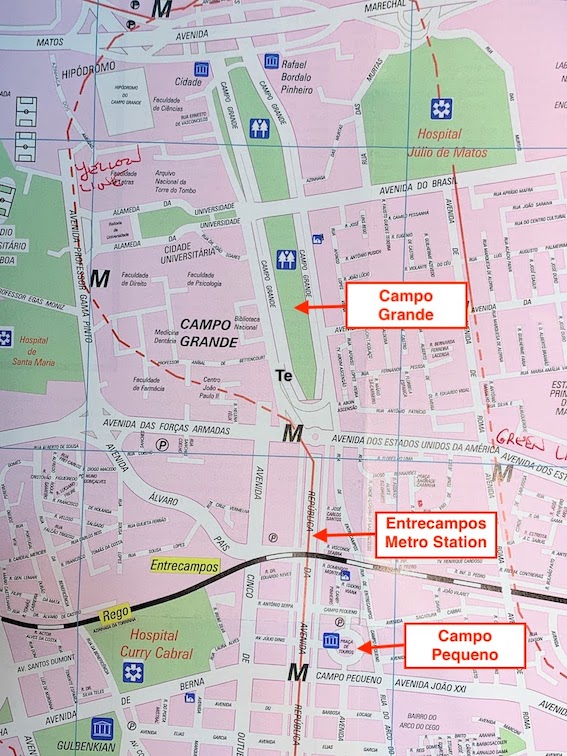
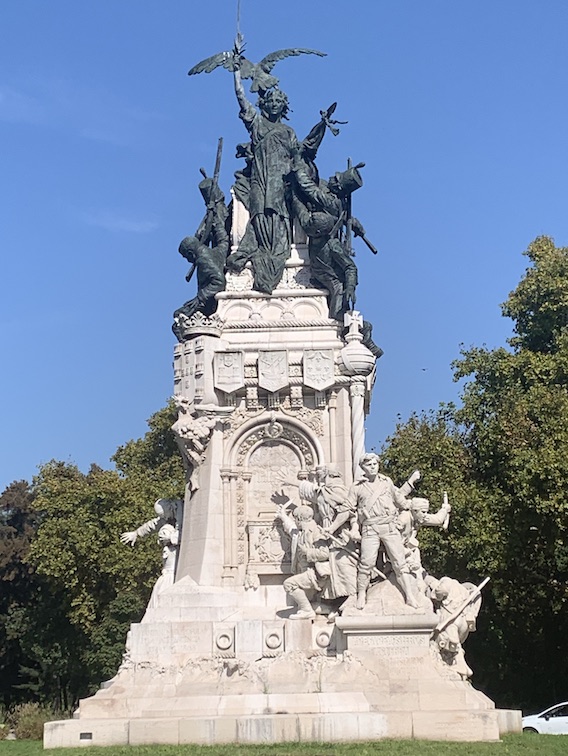
In the center of the roundabout is the Monumento Aos Heróis da Guerra Peninsular – the Monument to the Heroes of the Peninsular War.
This was the war to repel Napoleon’s invasion of Spain and Portugal in the early 1800’s. (We wrote about it in an earlier post. It was after this war that the 12 martyrs of the Fatherland were executed in another nearby campo.)
Beyond the monument, going north out of the roundabout, is a broad avenue that runs for almost a kilometer and a half, then does a u-turn and returns to the roundabout. Inside the loop is a long, narrow park – Campo Grande. At its widest, it’s 200 meters across. It encompasses 11 hectares or 27 acres.
A bit of history about the Campo
Campo Grande has been a public space for several hundred years, going back to the 1500’s when it was a public promenade called Campo de Alvalade. (Today, Alvalade is the name of the parish that includes Campo Grande and our neighborhood.)
In the 1600’s, the area began to be gentrified, with large manor houses and a few palaces built as retreats for the wealthy.
In the late 1700’s, a horse racing track was designed for the space. Horse races actually took place here in the early 1800’s.
A lake was constructed in the park in the mid-1800’s, to provide amusement for the wives and families of horse lovers. Rowing trips were a favorite activity of nobles and royalty.
In one early 20th Century photo we see a feira do gado (cattle fair) being held on the grounds.
This was an event where livestock were bought and sold, not an opportunity to take the cows out to play.
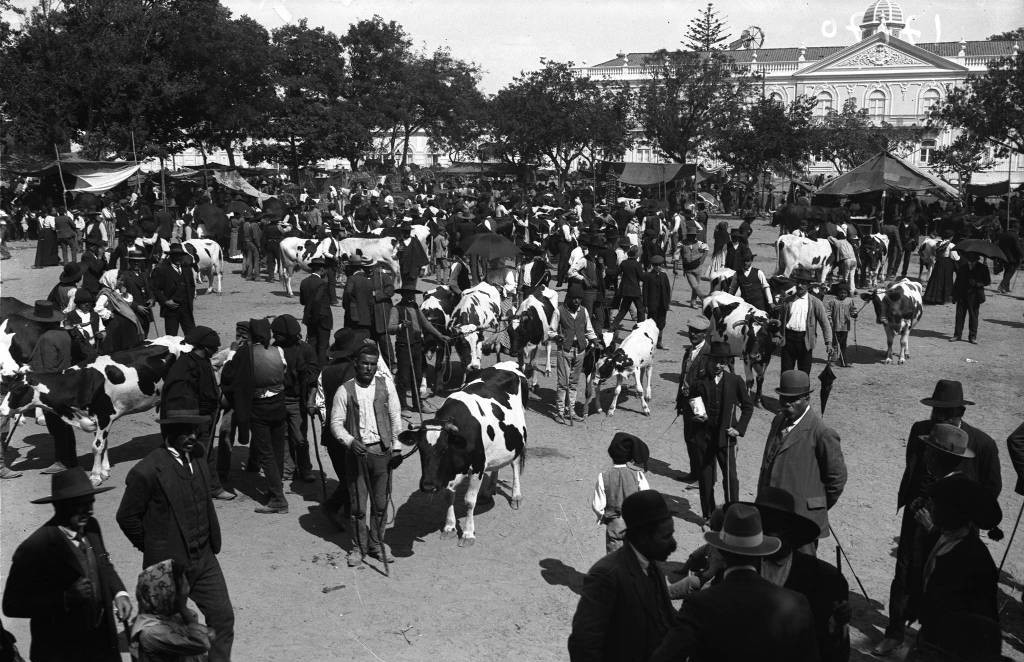
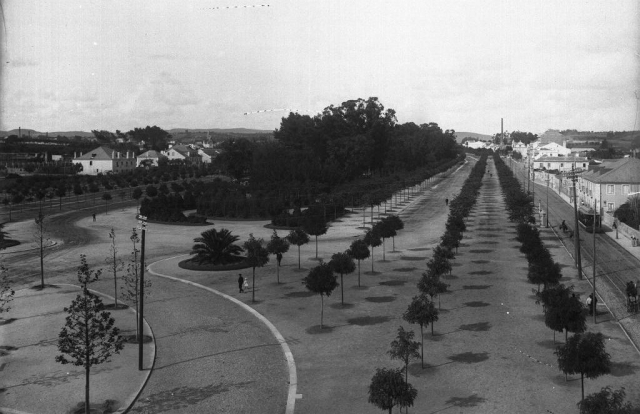
Another photo shows rows of trees planted, forming the outline of the park as it exists today.
The battle that really wasn’t
One article we saw said simply that the Batalha de Flores (Battle of the Flowers) took place in the park in 1907. It seemed unlikely that a military action had occurred here, so we dug a bit deeper.
Photos published in a contemporary newspaper show a long parade of horse-drawn wagons, bicycles, and automobiles – many decorated end-to-end with flowers.
The Battle of the Flowers was actually a major social event of the year, attended by many in Lisbon society and royalty. King Dom Carlos I, Queen Dona Amélia, and Prince Luís Filipe were all there.
Photos published in a contemporary newspaper show a long parade of horse-drawn wagons, bicycles, and automobiles – many decorated end-to-end with flowers.
Image credit: The Hemeroteca Digital
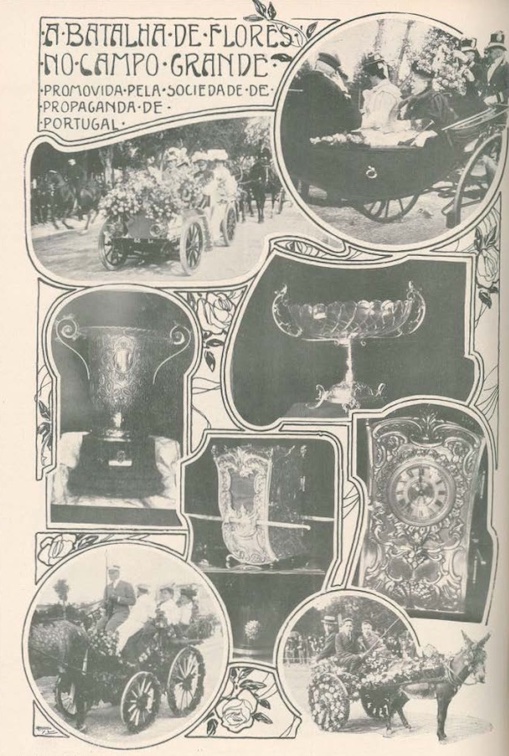
A short film of a portion of the event has survived. IMDB, the Internet Movie Database, describes it this way:
Along the road that borders Campo Grande, two lines of people stand for hours to watch the carriages pulled by horses (with tails cut short), horsemen, and numerous motor cars with nobles and bourgeoisie mingling in a sedate «flower battle» that was becoming the city’s «in thing» during the Carnival (Shrove Tuesday). One line of cars was northbound, the other southbound, and sometimes a lady or a gentlemen would throw some flours [sic] at those on the opposite line.
Changes from the 20th Century until today
During the 20th Century, the park underwent some significant changes. The garden was destroyed by a cyclone in 1941. A project was launched in 1945 to remodel the park, expand the gardens, add sports equipment and tennis courts.
Other major renovations took place between 2002 and 2017 that included adding new paths and planting more trees. In 2018, the south area of the park was renamed Jardim Mário Soares in honor of the former Prime Minister and President of Portugal who lived nearby until his death in 2017
Let’s take a walk in the park
The park is about a 10 minute walk from our apartment. When we first moved to Lisbon, we’d go there almost every day so Sox could get in a frisbee game. She’s slowed down a bit, so now we might get there once a week. But whenever we go, we enjoy it. Here are a few of the things we see.
The lay of the land
When you enter the park, you can choose between three walkways. Two outer paths follow the perimeter of the park and are marked with lanes for joggers and cyclists.
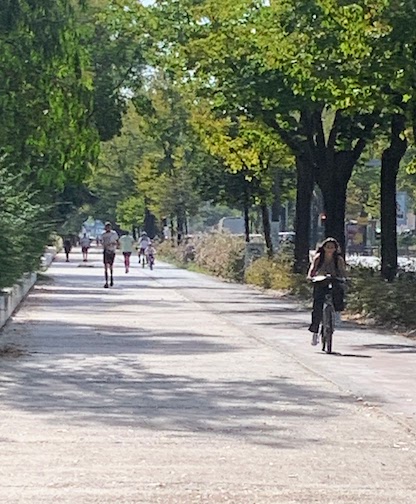
We usually take the path up the middle – the slow lane – where there is lots of shade and conveniently located benches.
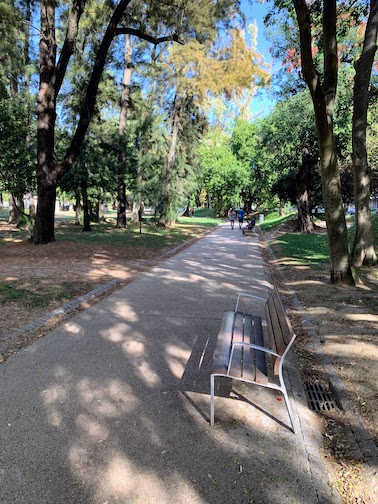
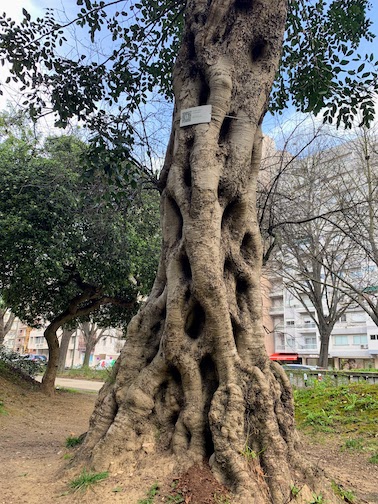
There are dozens of varieties of trees and shrubs in the park. Some of the unique ones have small placards attached that identify the species and where it originates.
The most stunning trees are the tallest ones near the north end. Some trees in the park are thought to be over 200 years old.
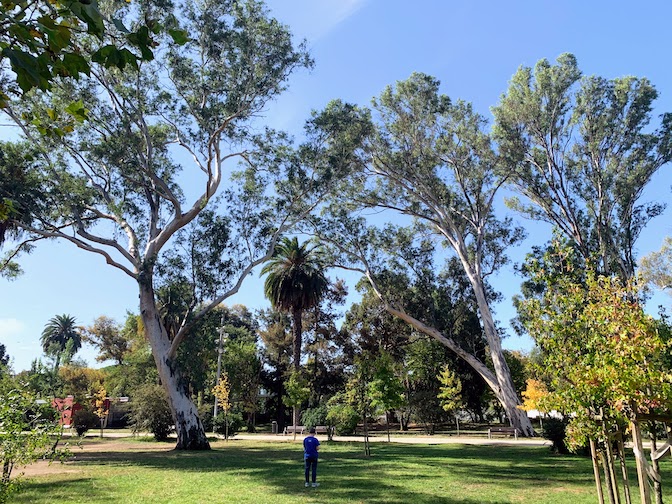
About midway up it’s length, the park is bisected by Avenida de Brasil, which takes traffic to and from the University of Lisbon campus to the west.
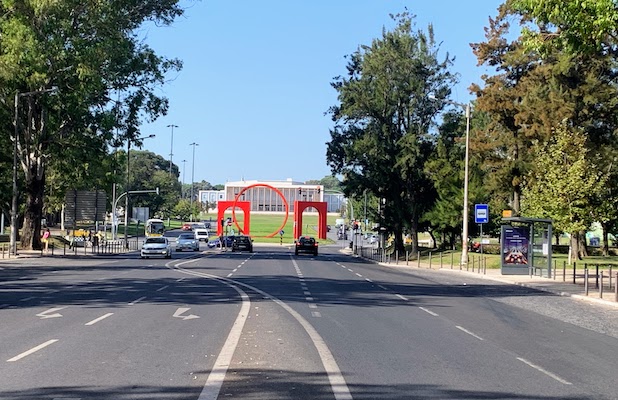
Due to the proximity to the U of L campus, and that of ISCTE – Instituto Universitário de Lisboa, just to the south, we see a lot of students in the park.
Let’s get something to eat!
It’s probably not a surprise that we would pay attention to where you can find food in Campo Grande. There are five restaurants within the park. They range from fast food to white tablecloth dining. We’ve tried one and are planning to visit another.
One of the most popular gathering spots in the park is the Déjà Vu Park quiosque. On any sunny day (and most cloudy ones) you’ll find people here enjoying a coffee and pastry, a beer and a sandwich, or just the shade under the umbrellas.
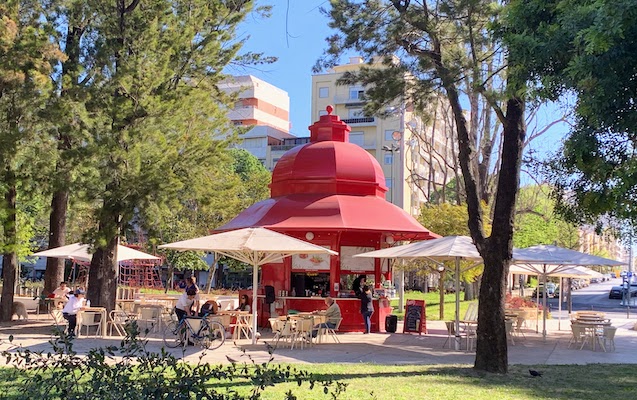
We had breakfast here one Sunday morning during our “Quiosque Quest”.
A second restaurant in the park that is on our short list of places to visit soon is BarNeário Gastrobar. It’s an inviting looking little place with a large shaded patio.

We’ve walked past many times and always thought it was another place to get coffee. But while doing the research for this post, we found pictures of some of their food and realized this was more than just another coffee shop.
Image credit: BarNeário Gastrobar
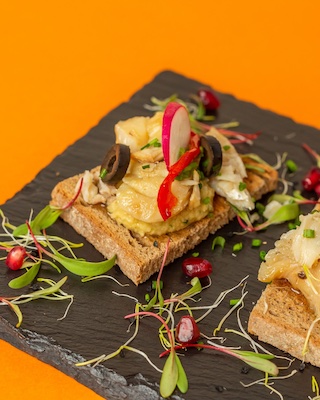
The other choices in the park are a McDonald’s, in a building it shares with classrooms of the University; Casa do Lago, a full-service restaurant with an international menu that overlooks the lake; and Tutti a Tavola, an upscale Italian place.
So many restaurants, so little time…
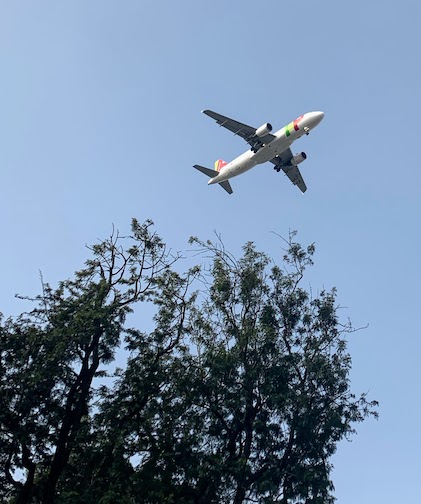
The quiet of the park is often interrupted by the sound of airliners passing overhead. We’re only a few miles from the Lisbon airport and the park is in the glide path.
It’s time to play!
Besides walking, jogging, and bike riding, there are lots of other ways to play in the park. There are 9 padel tennis courts for those who really want to work up a sweat. GO-fit, a local health club chain, has a large facility in Campo Grande.
Behind the quiosque is a large playground with swings and lots of things for the kids to climb on. When the younger kids are on an outing from school or daycare, they are always wearing bucket hats. Here’s one of the “bucket brigades” enjoying the rope ladders.
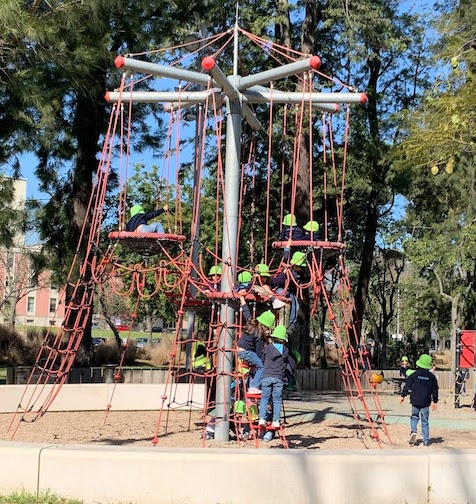
In the northern half of the park is the lake where rowboats can be rented. It’s also the scene of miniature regattas on some weekends.
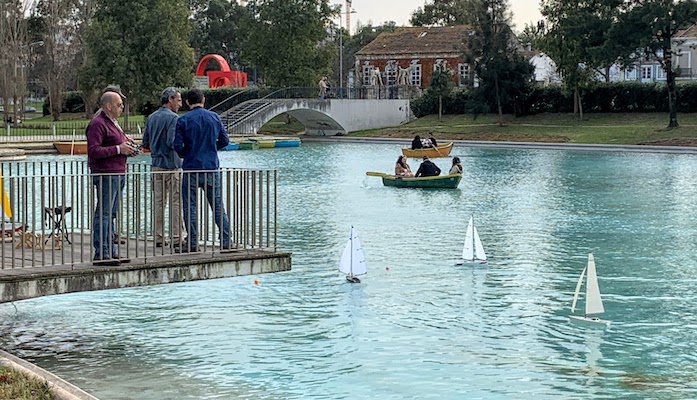
Ducks – small and large
A little ways past the playground is a large pond that often has a flock of ducks living in it. We’ve watched two different sets of duck parents raise their ducklings this year. At some point they leave, but we don’t know where they go. If we were closer to Memphis, we might look on top of the Peabody Hotel.
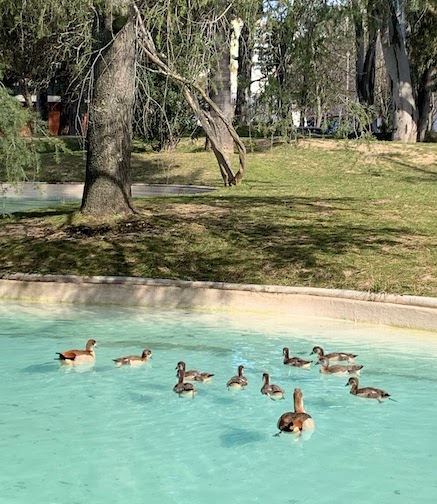
The pond is also the home of one of the strangest things you’ll see in the park. A statue or fountain, in the shape of a big duck, with water balloons or big boobs, depending on your point of view.
Most people’s reaction, when they see it for the first time, is “What in the heck is that?!”
Mary shot that video on one of only two days when we’ve seen the duck in action.
The fountain-sculpture is called “Infância”, or “Childhood”. It is a caricature by a Portuguese cartoonist, Samuel Azavey Torres de Carvalho, better known as Sam.
We have not been able to learn anything about what Sam was trying to say with the sculpture. We’ll leave that to your imagination.
Two kings standing watch
At the northernmost end of the park are statues of two Portuguese kings. On the left is Dom Afonso Henriques, the first king of Portugal. He ruled from 1139 until his death in 1185. On the right is Dom João I, who ruled from from 1385 until his death in 1433. Both played significant roles in establishing and maintaining Portugal as an independent nation. (Stories for another day.)
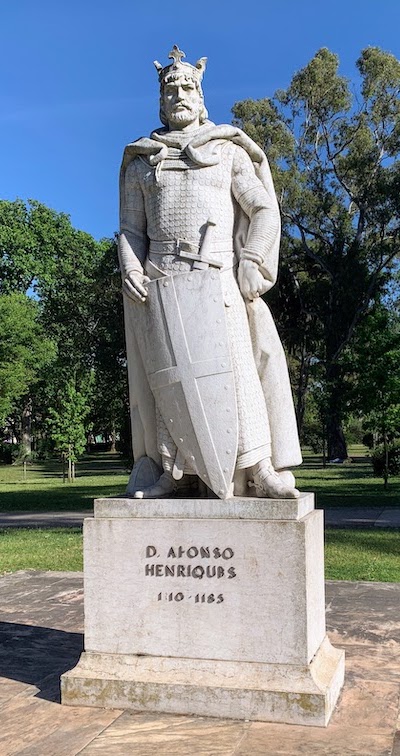
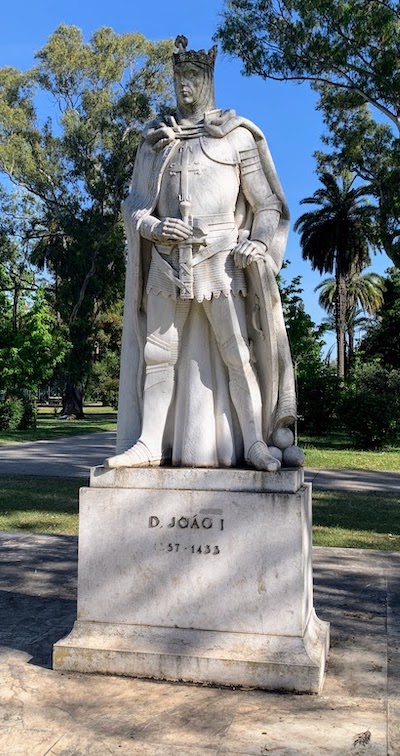
These statues have an interesting history. Originally they were placed in front of the Lisbon Camara Municipal (Municipal Chamber or City Hall). When a fire destroyed the building in 1995, the statues were moved to the Campo Grande park.
But for some unknown reason, they were placed facing away from the park, toward a street that has no entrance to the park.
Why? Who knows?
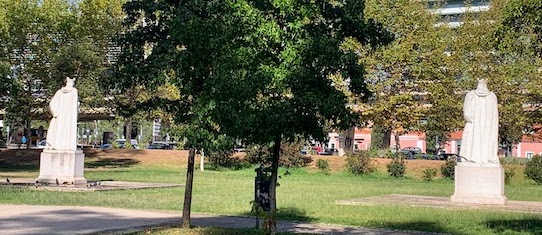
We like to think that they are standing there, with centuries of history behind them, looking ahead to the future, ready for whatever challenges it may bring.
That’s all for today
We hope you have enjoyed our mini-series about the two campos in our neighborhood. If you ever visit Lisbon, we’d encourage you to come north out of the old city center and enjoy what Alvalade has to offer. Spend the afternoon at Campo Grande, then take in a show or a bull race at Campo Pequeno.
As this post is published, we’re midway through a crazy open-jaw trip. We’ve been visiting friends who are staying in Lucca, Italy, in the Tuscan countryside. Then we’re off to Stockholm, Sweden to meet another friend. In future posts, we’ll have some impressions of those places and a few photos.
Until next time / Até a próxima vez
Mary and Mike
The Cook and The Writer
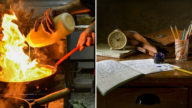
Where do you go to play, relax, and reconnect with nature? Tell us about your favorite outdoor space in the comments below or via the Contact Us form.

Interesting parks for sure. I’ll be interested to hear what you think of Stockholm. We’ve been there several times as Earl has cousins there. Also we were married in Uppsala which is a wonderful university town. I think you’ll love Sweden.